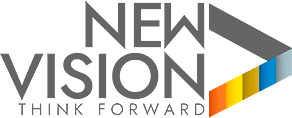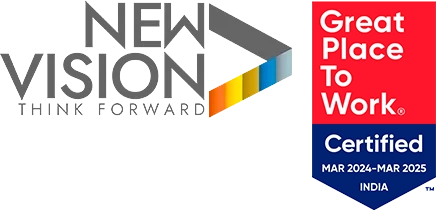
The pace at which organizations have been driving digital transformation efforts has accelerated exponentially. Digital transformation is not only strengthening core business processes; it’s also helping businesses discover deep insights from their data and act on them to stay agile and become resilient. The pandemic only amplified this need, especially for those finding it difficult to digitize workflows, reshape legacy business models, and respond to new situations.
Yet, despite all the pressure, a lot of organizations continue to live with subpar results because of their heavy reliance on siloed, legacy enterprise apps and systems.
Why legacy enterprise apps are detrimental to transformation
Adopting modern technological innovations is a great way to accelerate digital transformation efforts. However, many organizations don’t realize that such adoption won’t drive results if the underlying backbone is out of tune with the digital times. New tools and solutions make the most sense when they can seamlessly integrate into an optimized tech ecosystem with powerful and modern enterprise tools and solutions. This is especially true today where every strategy or decision needs to be based on hard data. But with a siloed and legacy IT ecosystem, capturing data from disparate systems and unearthing insights is not only time-consuming but also extremely overwhelming.
Legacy apps and systems, although an indispensable part of organizations in many sectors are a risk in the transformation process as they bring with them a host of challenges. These include:
- Rigid and inflexible architecture makes them incapable of keeping step with the required pace of digital change
- Poor integration capabilities make it difficult for them to work in cohesion with new systems
- Outdated security features create erosion in customer trust if time-consuming workarounds are not implemented
- High support and maintenance overheads can only be addressed by highly skilled niche resources
- Old-school UI/UX makes it difficult for modern users to use and navigate through them
5 warning signs you should watch out for
It’s becoming apparent that legacy systems and enterprise applications and tools can do more harm than good. If you want to maximize the results (and amp up the ROI) from your IT investments and digital strategies, it may be time to transform these foundational elements of your enterprise tech landscape. But how will you know if it is time?
Here are 5 signs that your enterprise apps need to be upgraded and modernized:
Sign 1: Your users often complain about performance
If there is a steady increase in the number of complaints your IT helpdesk receives about the tools and platforms your employees use, either about how slow they are or their awkward functioning, your legacy apps could be to blame. Modernizing them through strategic adoption of technologies like the cloud or driven by well-planned refactoring, recoding, or restructuring efforts can help enhance the capabilities of your apps. This will improve the user experience while also making them more suited to operate in today’s digital era.
Sign 2: You often face security-related issues
If security breaches and data loss represents a new fire to douse each day, it might be because your legacy apps do not have the capabilities needed to thwart modern-day attacks. Given how sophisticated hacking technology has become today, modernizing your apps equips them with the most robust and up-to-date security features. These features not only help in safeguarding your business and your data from unwarranted attacks; they also allow you to keep up with regulatory changes and compliance mandates. Modernization can also provide you with a deeper understanding of existing security risks and loopholes, allowing you to take the necessary steps to manage their ramifications.
Sign 3: You end up spending substantial time and effort in managing them
If your IT teams end up spending substantial time and effort in fighting just to keep the lights on in your enterprise, it is time to upgrade and modernize your enterprise apps. Because of the rigid architectures, legacy apps are not only difficult to maintain and support; they also require resources who have a good understanding of the proprietary technology. Modernizing such apps means your teams can spend less time (and money) in maintaining the apps and more time in curating newer and more effective products and experiences for internal users and customers. It can also help in drastically bringing down the costs of planned and unplanned downtime.
Sign 4: You are not able to integrate your apps across your IT ecosystem
If you find yourself struggling to connect apps to create seamless workflows across your IT ecosystem, it might be because your existing apps are coming in the way of enterprise-wide integration. Upgrading and modernizing existing apps is a great way to enable interoperability between mission-critical systems and modern SaaS-based services and applications. Such interoperability leads to better communication between apps across your enterprise, making it easy for them to share data and resources as and when needed.
Sign 5: Your apps are restricting your drive to innovation
If you find yourself struggling to convert innovative ideas into timely action, it could be because of inflexible and overly complex systems. By modernizing such apps and systems, you can make them relevant for today’s day and age. Such modernization can help introduce cloud and analytics capabilities into the fabric of the enterprise. Adopting the cloud is a key structural change to embrace on the road to digital transformation, but that’s a blog in itself!
Modernization can open up a world of new-age benefits including anytime, anywhere access for all users, improved security, better availability, scalability, and more. Through modernization, you can introduce new features and changes quickly, personalize experiences, and respond faster and better to the changes that have become common in the modern marketplace. But the bigger and more impactful benefit that app modernization offers is that it creates a robust foundation for mining and analyzing data in a holistic fashion – across locations, systems, and partners.
As digital transformation becomes a top priority, organizations need to move away from their siloed, legacy apps and systems. App modernization is a great way to enhance the capabilities of existing systems and solutions while paving the way for critical data analysis; through up-gradation, you can pave the way for enterprise-wide IT integration, improve your security and compliance posture, enhance performance, reduce time, money, and effort spent in support and maintenance, while also driving continuous integration. Of course, once the decision has been made to modernize the apps, you will need the advice, support, and skills of an expert partner on this journey. That’s why you should connect with us!


